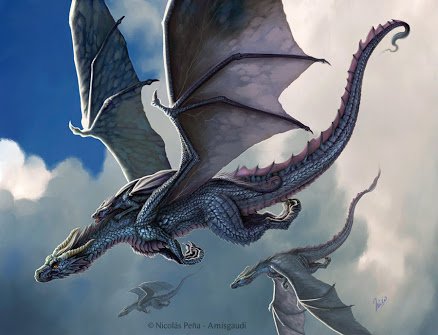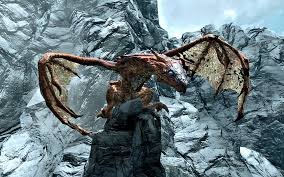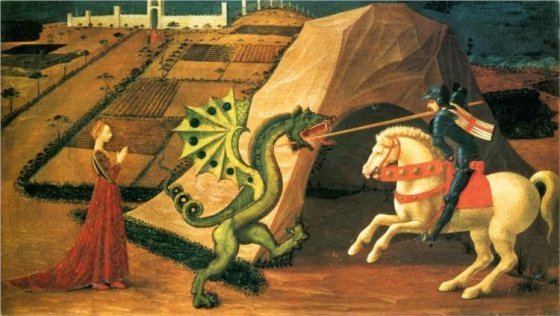
DRAGON:
Dragons are among the most popular and enduring of the world's mythological creatures. Dragon tales are known in many cultures, from the Americas to Europe to India to China. Though they populate our books, films, and television shows, they have a long and rich history in many forms.It's not clear when or where stories of dragons first emerged, but the huge, flying serpents were described by the ancient Greeks and Sumerians. For much of history dragons were thought of as being like any other exotic animal: sometimes useful and protective, other times harmful and dangerous. That changed when Christianity spread across the world; dragons took on a decidedly sinister interpretation and came to represent Satan. In medieval times, most people who heard anything about dragons knew them from the Bible, and it's likely that most Christians at the time believed in the literal existence of dragons. After all, Leviathan — the massive monster described in detail in the Book of Job, chapter 41 — seems to describe a dragon in detail:
"I will not fail to speak of Leviathan's limbs, its strength and its graceful form. Who can strip off its outer coat? Who can penetrate its double coat of armor? Who dares open the doors of its mouth, ringed about with fearsome teeth? Its back has rows of shields tightly sealed together; each is so close to the next that no air can pass between. They are joined fast to one another; they cling together and cannot be parted. Its snorting throws out flashes of light; its eyes are like the rays of dawn. Flames stream from its mouth; sparks of fire shoot out. Smoke pours from its nostrils as from a boiling pot over burning reeds. Its breath sets coals ablaze, and flames dart from its mouth" (NIV).
Many dragons:
Though most people can easily picture a dragon, people's ideas and descriptions of dragons vary dramatically. Some dragons have wings; others don't. Some dragons can speak or breathe fire; others can't. Some are only a few feet long; others span miles. Some dragons live in palaces under the ocean, while others can only be found in caves and inside mountains.
As folklorist Carol Rose discusses in her book "Giants, Monsters, & Dragons: An Encyclopedia of Folklore, Legend, and Myth" (Norton, 2001), dragons "have composite features from many other beasts, such as the head of an elephant in India, that of a lion or bird of prey in the Middle East, or numerous heads of reptiles such as serpents. Their body color may range from green, red, and black to unusually yellow, blue or white dragons."
Zoologist Karl Shuker describes a wide variety of dragons in his book "Dragons: A Natural History" (Simon & Schuster, 1995), including giant snakes, hydras, gargoyles and dragon-gods, as well as more obscure variants such as basilisks, wyverns and cockatrices. The dragon, whatever else it might be, is clearly a chameleon, its features adapting to the cultural and literary expectations of the era.
Dragons continue to capture the public's imagination in fantasy books and films, appearing in everything from the kid-friendly 2010 film "How to Train Your Dragon" to the more adult-oriented "Game of Thrones" books and to "The Hobbit" book and movies. The popular role-playing game Advanced Dungeons and Dragons describes more than a dozen varieties of dragons, each with unique personalities, powers, and other characteristics (Black dragons, for example, are fond of eels — who knew?).
A history of dragons:
The word "dragon" comes from the ancient Greek word "draconta," meaning "to watch," suggesting that the beast guards valuables. Dragons typically guard treasure such as mountains of gold coins or gems, though this makes little logical sense: a creature as powerful as a dragon surely doesn't need to pay for anything. It is instead a symbolic treasure, not for the hoarding dragon but instead booty for the brave knights who would vanquish it.
Dragons are one of the few monsters cast in mythology primarily as a powerful and fearsome opponent to be slain. They don't simply exist for their own sake; they exist largely as a foil for bold adventurers. Other mythical beasts such as trolls, elves and fairies interact with people (sometimes mischievously, sometimes helpfully) but their main role is not as combatant.
The Christian church created legends of righteous and godly saints battling and vanquishing Satan in the form of dragons. The most celebrated of these was St. George the Dragon Slayer, who in legend comes upon a town threatened by a terrible dragon. He rescues a fair maiden, protects himself with the sign of the cross, and slays the beast. The town's citizens, impressed by St. George's feat of faith and bravery, immediately convert to Christianity.
Vanquishing a dragon was not only an important career opportunity for any ambitious saint, knight or hobbit, but according to legend it was also a way to raise armies. As Michael Page and Robert Ingpen note in their "Encyclopedia of Things That Never Were" (Viking Penguin, 1987), "The use of dragon's teeth provides a simple method of expanding the armed forces of any country. It was first practiced by Cadmus, King of Thebes. First, prepare a piece of ground as though for sowing grain. Next, catch and kill any convenient dragon and draw all its teeth. Sow these in the furrows you have prepared, cover lightly, and stand well away."
Soon veteran warriors "clad in bronze armor and armed with swords and shields ... emerge rapidly from the earth and stand in ranks according to the way in which the dragons teeth were sown." Apparently these draconis dentata soldiers are a quarrelsome lot and will turn on each other lacking a ready enemy, so if you plan to do this, be sure your adversaries are nearby.
Scholars believe that the fire-breathing element of dragons came from medieval depictions of the mouth of hell; for example, art by Hieronymus Bosch and others. The entrance to hell was often depicted as a monster's literal mouth, with the flames and smoke characteristic of Hades belching out. If one believes not only in the literal existence of hell, but also the literal existence of dragons as Satanic, the association is quite logical.
Medieval theology aside, few people today believe in the literal existence of dragons in the way they may believe in the existence of Bigfoot or the Loch Ness monster, for example. The dragon (or at least the dragon version most familiar to Westerners) is simply too big and too fantastic to take seriously or literally. In the modern age of satellite imagery and smart phone photos and videos, it's simply implausible that any giant, unknown winged fire-breathers inhabit Earth's skies unseen.
However, only a few centuries ago rumors of dragons seemed to have been confirmed by eyewitness accounts from sailors returning from Indonesia who reported encountering dragons — Komodo dragons, a type of monitor lizard — which can be aggressive, deadly, and reach 10 feet in length. (In a possible parallel to dragons, it was previously believed that the bite of a Komodo dragon was especially deadly because of toxic bacteria in its mouth, though that myth was debunked in 2013 by a team of researchers from the University of Queensland who discovered that the Komodo dragon's mouths are no dirtier than those of other carnivores.)Western scientists only verified the existence of the Komodo dragon around 1910, but rumors and stories of these fearsome beasts circulated long before that.
Dragons, in one form or another, have been around for millennia. Through epic fantasy fiction by J.R.R. Tolkien and others, dragons have continued to spark our collective imagination and — unlike the dinosaurs that helped inspire stories about them — show no sign of dying out.
Hi! I am a robot. I just upvoted you! I found similar content that readers might be interested in:
https://www.livescience.com/25559-dragons.html
Downvoting a post can decrease pending rewards and make it less visible. Common reasons:
Submit
I like reading about dragons and drawing them. Very exciting story about dragons, I liked it.@lena1
Downvoting a post can decrease pending rewards and make it less visible. Common reasons:
Submit
yeah this is intersting story.... Dragons, in one form or another, have been around for millennia.
Downvoting a post can decrease pending rewards and make it less visible. Common reasons:
Submit